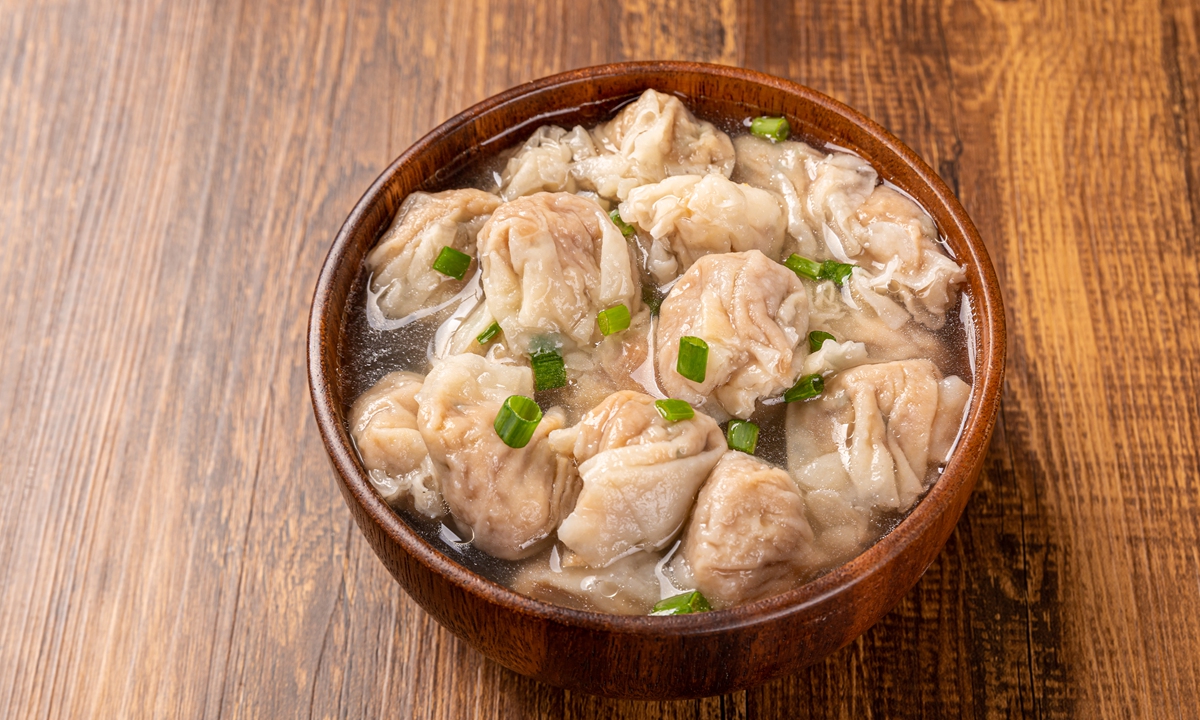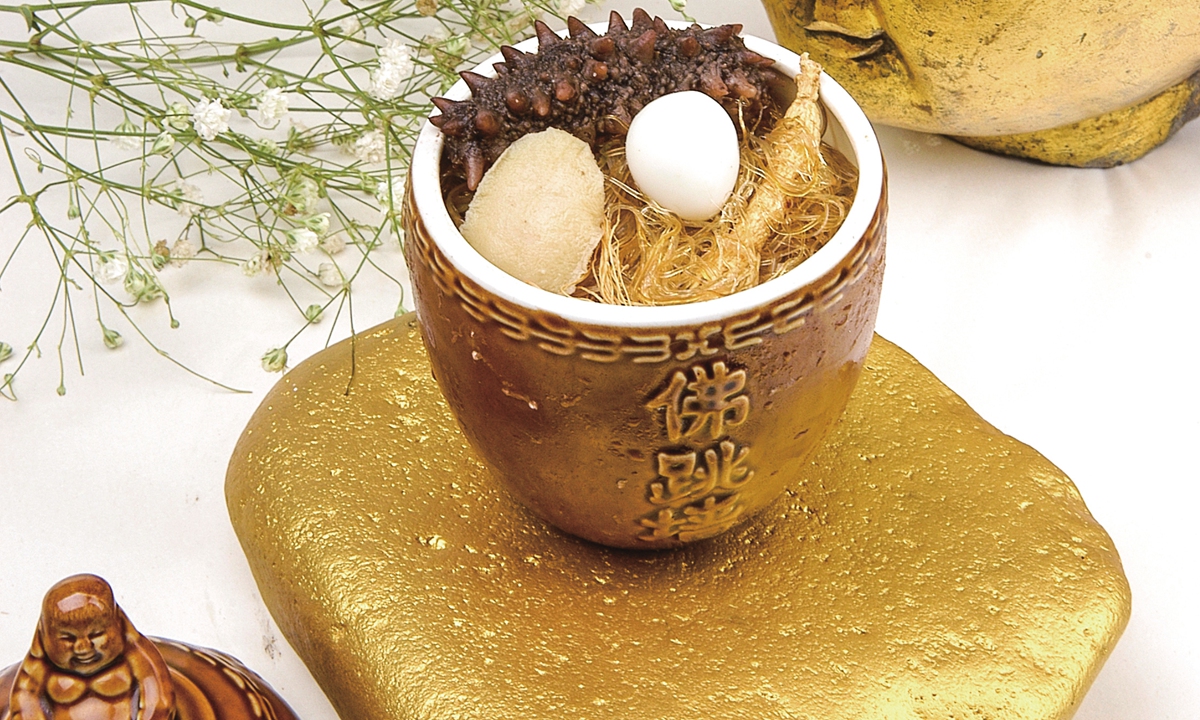ARTS / CULTURE & LEISURE
Exploring Fuzhou: Birthplace of China’s most popular fast-food chain

Rouyan, a kind of wonton, is a typical dish of Fuzhou. Photo: VCG

Fotiaoqiang, a famous Fujian dish often served at lavish banquets Photo: VCG
"Blue tears" are a romantic way to describe the bioluminescence phenomenon of marine plankton.
In China, this phenomenon is mainly caused by the massive proliferation of noctiluca. From April to August, the "blue tears" appear more frequently in the southeastern coastal areas of China.
To catch a glimpse of the so-called "blue tears," my friend and I took the earliest flight to Fuzhou, East China's Fujian Province, as soon as our holiday started at the end of June, and embarked on a seaside trip.
Heavy rains had hit southern China prior to our trip.
After nearly a month of preparations, our trip turned into disappointment. The local guide told us that it was impossible to see blue tears, given the recent rainfalls, nor was going to the beach at night a smart move.
It didn't take long before we decided to rent a car and go in search of Fuzhou's delicious cuisine instead.
As a coastal city, one might expect Fuzhou to be famous for its seafood, however, as the representative of Fujian cuisine, Fuzhou has a long history and rich cultural connotations.
Fuzhou cuisine is characterized by a light, fresh, smooth and tender taste, with emphasis on the combination of soup and ingredients.
Fuzhou cuisine sources from not only seafood, but also mountain delicacies and agricultural products, which are carefully processed and cooked to form a distinctive style of dishes.
Absorb and innovate
The development of Fuzhou cuisine has been influenced by the geographical environment, historical changes and ethnic exchanges (Fujian is the hometown of the Hakka ethnic group).
The area constantly absorbs and innovates its culture, creating a diversified and open cultural heritage.
Fuzhou snacks include fish balls, rouyan (a kind of wonton), fotiaoqiang, oyster cakes and so on.
Rouyan is one of the most famous dishes here. The wrap of the wonton is made by hand with pork hind leg meat and sweet potato flour. It is as thin as paper, soft and elastic. The filling is made of minced fish, pork, shrimp and water chestnut, seasoned with cooking wine and so on, with a very refreshing taste.
On the first day of our trip, my friend and I drove to an old local restaurant that has a history of hundreds of years.
The staff told us that the wonton wrap is made by them every day in the morning, using hundreds of kilograms of pork and sweet potato powder.
Another dish is banmian, or dried noodles and is one of the favorite breakfasts of Fuzhou people. It is a vegetarian noodle dish made by boiling egg noodles and then mixing them with peanut butter, soy sauce, lard, scallions and other ingredients.
The noodles are smooth and refreshing, with a rich and delicious flavor. Banmian is sold in many restaurants in Fuzhou.
On the morning of the day of our departure, we went to an old noodle shop that is very popular among tourists and locals alike.
Home and abroad
Fuzhou cuisine, the most famous representative of which is the nationwide food chain Shaxian Delicacies, originated from a county of the same name in Fujian Province, a place not far from Fuzhou.
The Shaxian Delicacies restaurant chain is not only popular in Fujian, but has created a huge fast-food industry across China.
According to statistics, there are more than 80,000 Shaxian Delicacies stores in China, for an annual revenue of over 50 billion yuan ($6.8 billion).
Thanks to the inclusion of a large number of traditional Fuzhou dishes during its expanding process, Shaxian Delicacies has become famous all over the country.
However, Fuzhou cuisine's conquest of people's appetite is not limited to the domestic market.
For years, Fuzhou has won its name for its delicacies in other countries, which have been adapted to cater to local people's taste.
When a few years ago I went to Malaysia, I was pleasantly surprised to find a local interpretation of Fuzhou cuisine.
Fuzhou cuisine has a long tradition in Malaysia, dating back to the late 19th century, when many Fujian residents immigrated to Malaysia to seek more opportunities.
They brought with them their own ingredients, cooking skills and dietary habits, and blended them with the local culture and flavors, creating a unique Malaysia-Fuzhou fusion cuisine.
One of the characteristics of Malaysian Fuzhou cuisine is the use of many local spices, such as chili, ginger, garlic, lemongrass and coconut milk, which increase the aroma and spiciness of the dishes.
Another characteristic is the use of many Malaysian specific ingredients, such as durian, mangosteen and fried dough sticks, which enrich the texture of the dishes.
But here in the city of Fuzhou, one can have a taste of the most authentic local food.


